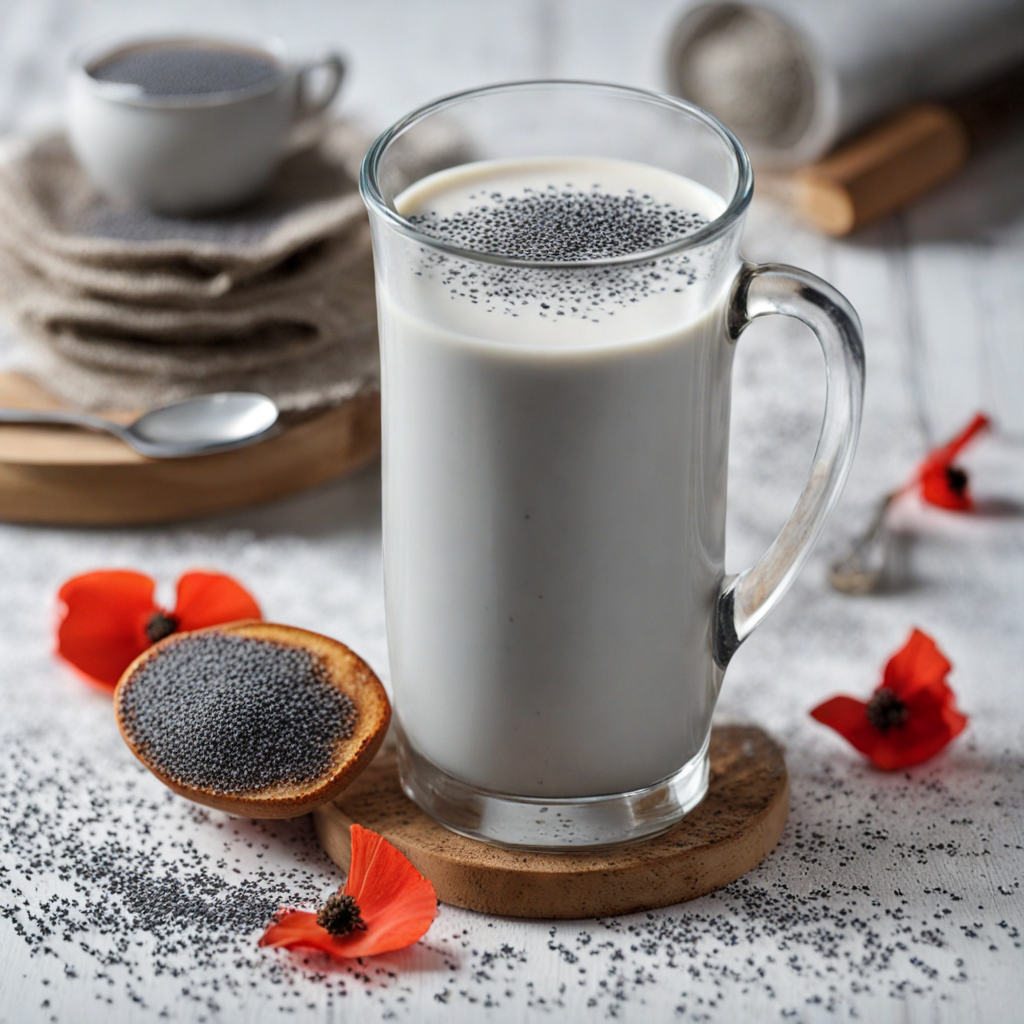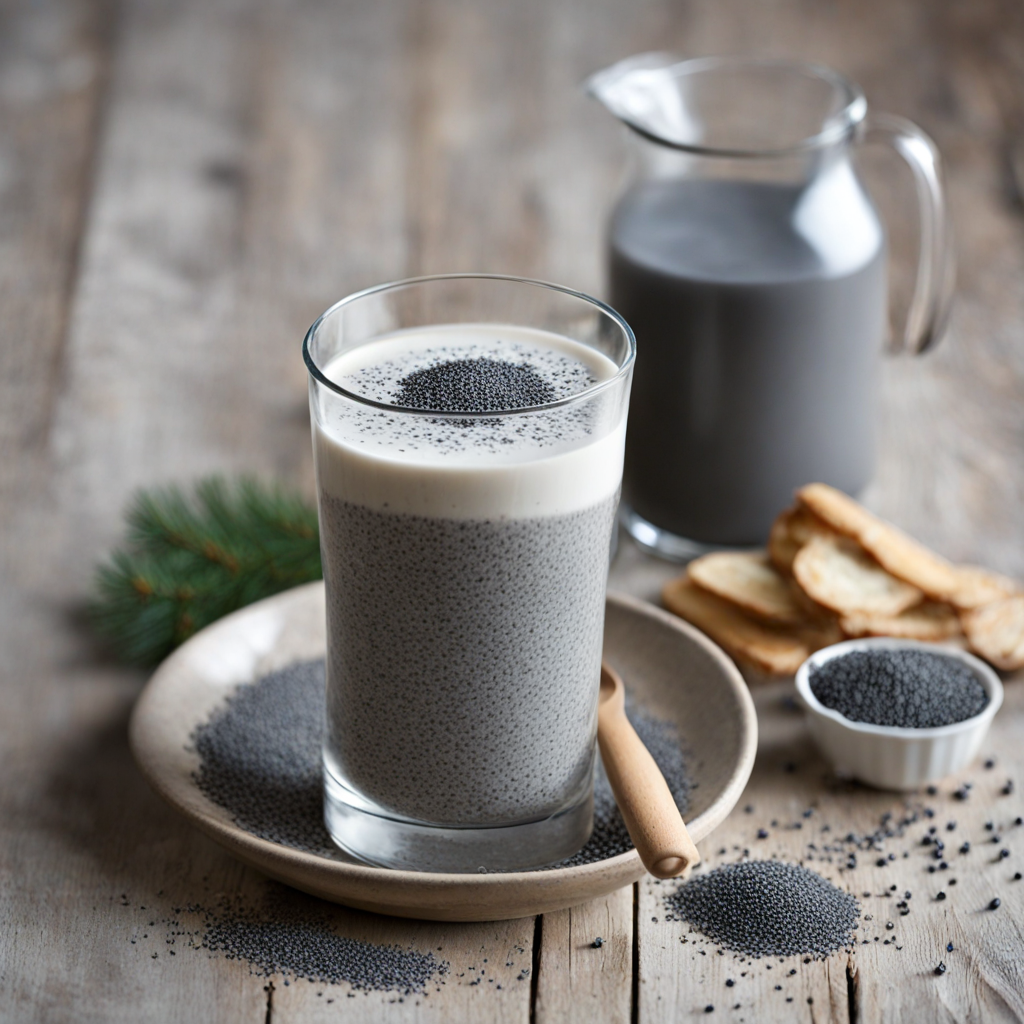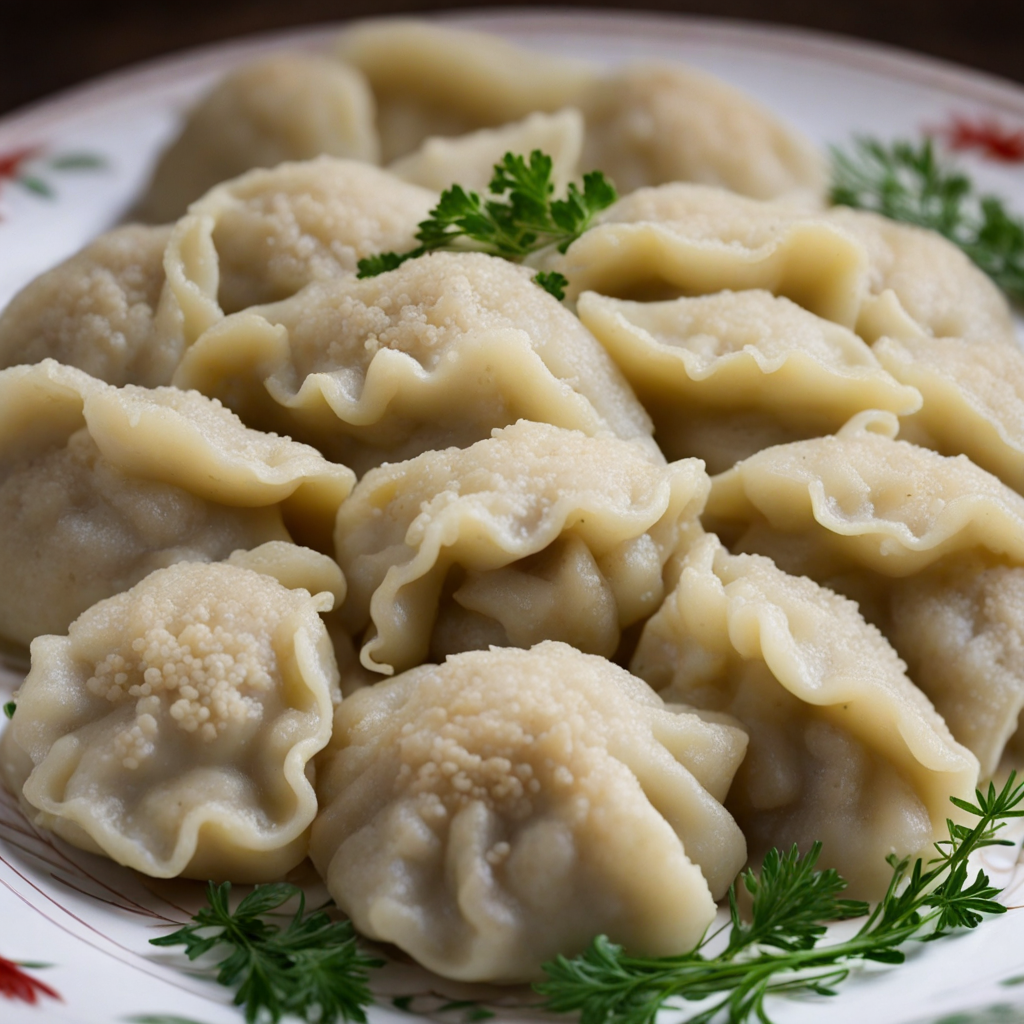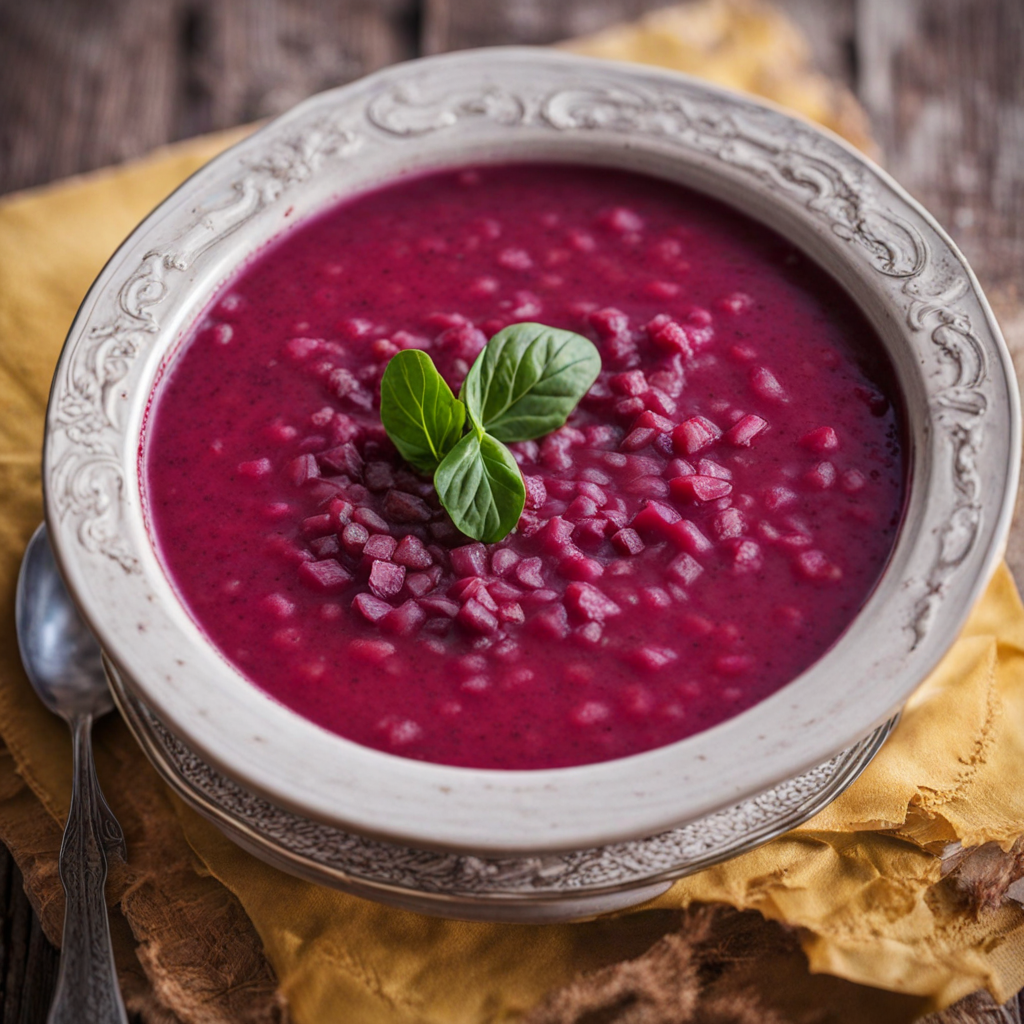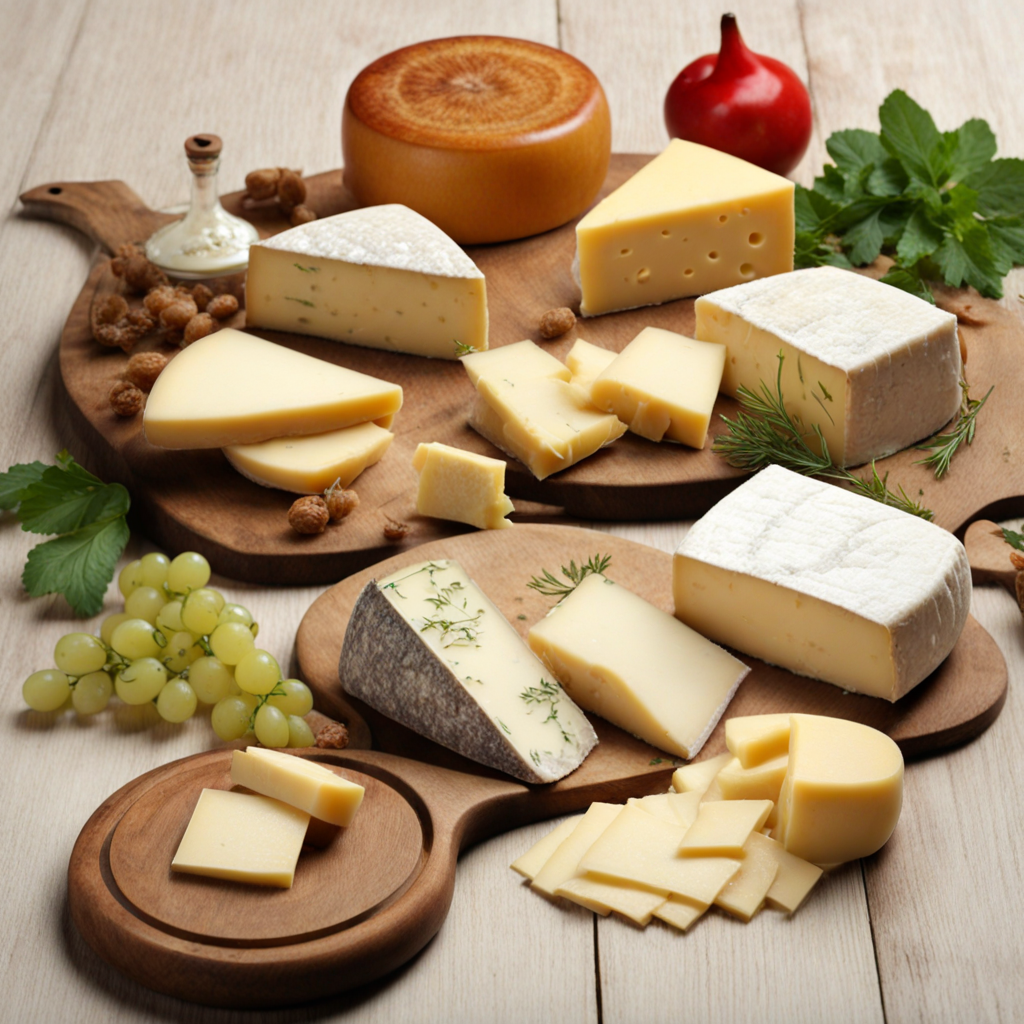Poppy Seed Milk
Poppy Seed Milk, or "aguonų pienas" in Lithuanian, is a traditional beverage that showcases the unique flavor profile of poppy seeds, which are a staple in Lithuanian cuisine. This creamy drink is made by grinding soaked poppy seeds and mixing them with water, resulting in a smooth, milky texture that is both rich and satisfying. The natural oils from the seeds lend a subtle nuttiness, while the drink's delicate sweetness can be enhanced with a touch of honey or sugar, offering a delightful balance of flavors that is both comforting and refreshing. The preparation of Poppy Seed Milk involves soaking the seeds overnight, allowing them to swell and soften, which facilitates easier grinding. Once blended, the mixture is often strained to achieve a silky consistency. This artisanal process not only preserves the nutritional benefits of poppy seeds, which are rich in calcium and healthy fats, but also highlights the traditional methods of Lithuanian food culture. The resulting liquid can be enjoyed on its own or used as a base for various dishes, showcasing its versatility. Poppy Seed Milk holds a significant place in Lithuanian culinary traditions, often served during festive occasions or as a comforting drink during colder months. Its unique flavor and creamy texture make it a fascinating addition to any food lover's palate. Whether enjoyed chilled or warmed, this beverage invites you to explore the rich history and flavors of Lithuania, leaving a lasting impression that encourages you to savor every sip of this delightful drink.
How It Became This Dish
The Enigmatic History of Aguonų Pienas: Lithuania's Poppy Seed Milk #### Origins: A Culinary Gem from the Baltic Aguonų pienas, or poppy seed milk, is a cherished beverage in Lithuanian cuisine, with roots that delve deep into the agricultural practices and culinary traditions of the Baltic region. Poppy seeds have been cultivated in Lithuania for centuries, with evidence of their use tracing back to ancient times. The opium poppy (*Papaver somniferum*) is believed to have been introduced to the area by early Slavic settlers and traders, who recognized the seeds' versatility and nutritional value. The cultivation of poppy seeds in Lithuania flourished in the fertile soils of the region, especially during the Middle Ages. As a crop that thrived in the local climate, poppy seeds became a staple in the diets of Lithuanian peasants. The seeds were not only a source of nutrition but also held significant cultural importance. They were woven into the fabric of folklore, symbolism, and traditional practices, often associated with prosperity and fertility. #### Cultural Significance: A Symbol of Tradition Aguonų pienas is more than just a beverage; it embodies the essence of Lithuanian culture and heritage. Traditionally, it is made by soaking ground poppy seeds in water, which extracts their rich, creamy essence. This simple preparation method reflects the ingenuity of Lithuanian home cooking, where resourcefulness and respect for local ingredients reign supreme. The drink holds a special place in Lithuanian festivities, particularly during Christmas and other religious celebrations. Poppy seeds are considered a symbol of abundance and are often included in holiday dishes. Aguonų pienas is particularly significant during Kūčios, the traditional Christmas Eve dinner, where it is served alongside other symbolic foods. The practice is rooted in ancient pagan customs that celebrated the winter solstice and the cycle of life, death, and rebirth. In this context, poppy seeds symbolize the hope for a fruitful harvest in the coming year. Moreover, the drink has connections to rituals surrounding birth and marriage. In some regions, it was customary to prepare Aguonų pienas for a newlywed couple, symbolizing the sweetness of their union and the hope for offspring. The drink's creamy texture and pleasant flavor made it a fitting choice for celebrating significant life events. #### Preparation and Evolving Recipes The preparation of Aguonų pienas is relatively straightforward, yet it has evolved over time to reflect the changing tastes and culinary practices of Lithuanian society. Traditionally, the process begins with soaking poppy seeds in water or milk overnight, allowing them to swell and soften. The seeds are then ground into a paste, often using a mortar and pestle, and mixed with water or milk to create a smooth, creamy beverage. Sweeteners such as honey or sugar may be added, along with flavorings like vanilla, to enhance the drink's appeal. In modern times, the drink has seen variations that cater to contemporary palates. While the traditional version remains popular, some recipes include the addition of nuts, spices, or even fruit purees to create a more complex flavor profile. Vegetarian and vegan adaptations have also emerged, using plant-based milks to replace dairy, making Aguonų pienas accessible to a broader audience. #### Development Through the Ages: From Rural Roots to Urban Delights Historically, Aguonų pienas was primarily enjoyed in rural households, where the cultivation of poppy seeds was common. However, as Lithuania underwent social and economic transformations, particularly during the 20th century, the drink began to find its place in urban settings. The industrialization of agriculture and the migration of rural populations to cities led to a wider dissemination of traditional foods, including Aguonų pienas. During the Soviet era, food production and distribution underwent significant changes. While many traditional recipes faced challenges, Aguonų pienas maintained its significance as a symbol of Lithuanian identity. The drink became a nostalgic reminder of home for those who had moved away, serving as a connection to their roots. In the context of a homogenizing Soviet culture, the preparation and consumption of traditional foods like Aguonų pienas took on a subversive quality, allowing Lithuanians to assert their cultural identity. With the re-establishment of Lithuania's independence in 1990, there was a renewed interest in traditional foods and culinary heritage. Aguonų pienas experienced a revival as chefs and home cooks sought to reclaim and celebrate their cultural traditions. Food festivals, cooking classes, and culinary tourism highlighted traditional Lithuanian cuisine, bringing Aguonų pienas back into the spotlight. #### The Modern Era: Aguonų Pienas in Contemporary Cuisine Today, Aguonų pienas is not only a staple at Lithuanian family gatherings and religious celebrations but also finds its way into modern cafes and restaurants. Chefs are experimenting with the drink, incorporating it into innovative dishes and beverages that reflect contemporary culinary trends. Poppy seed milk lattes, desserts, and even smoothies showcase the versatility of Aguonų pienas, appealing to a younger generation that values both tradition and creativity. Moreover, the health benefits associated with poppy seeds have contributed to the drink's resurgence. Poppy seeds are rich in essential fatty acids, vitamins, and minerals, making Aguonų pienas an attractive option for health-conscious consumers. As the global interest in plant-based diets continues to grow, Aguonų pienas stands as a testament to Lithuania's rich agricultural practices and culinary heritage. #### Conclusion: A Beverage of Resilience and Heritage Aguonų pienas is more than just a drink; it encapsulates the resilience of Lithuanian culture and the enduring significance of traditional foods. From its humble origins in rural households to its place on modern menus, Aguonų pienas has navigated the complexities of history while remaining a cherished symbol of Lithuanian identity. As Lithuania continues to embrace its culinary heritage, Aguonų pienas will undoubtedly remain a beloved staple, bridging the gap between the past and the present. The creamy sweetness of poppy seed milk is not just a taste; it is a story—a narrative of tradition, celebration, and the unwavering spirit of a nation that honors its roots while looking towards the future.
You may like
Discover local flavors from Lithuania


